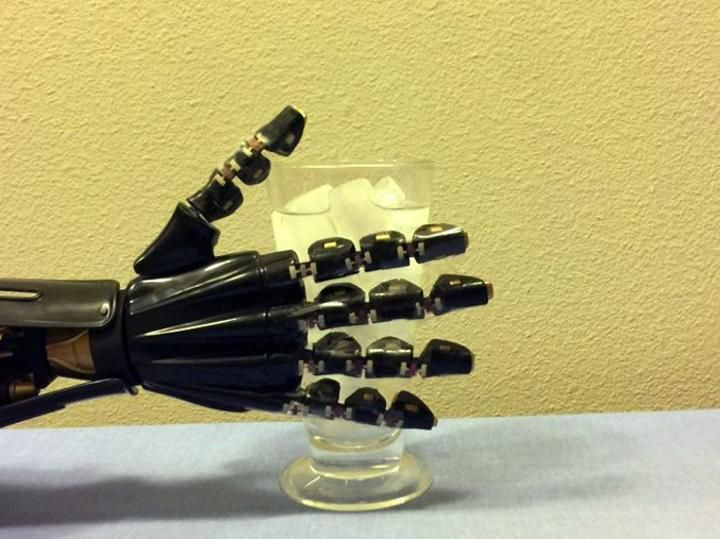Researchers Create Artificial Skin To Give Robots Sense Of Touch

As robots get more advanced and perform more complicated tasks, such as conducting a philharmonic orchestra in Italy, there is still one thing the machines certainly cannot do: feel. However, if scientists from the University of Houston have anything to say about it, that may change soon, at least insofar as the sense of touch is concerned.
Cunjiang Yu, an assistant professor at the university and three other researchers created “a semiconductor in a rubber composite format” that can stretch and still retain functionality, allowing a robotic hand to feel temperature differences and distinguish between hot and cold. Writing in the journal Science Advances, they described “a new mechanism for producing stretchable electronics, a process that relies upon readily available materials and could be scaled up for commercial production,” according to a statement on the university’ website.
Semiconductors are usually brittle and incorporating them into stretchable materials usually involves complicated procedures, Yu said in the statement, making the resulting materials both less stable and more expensive than the new material created by his team.
“Our strategy has advantages for simple fabrication, scalable manufacturing, high-density integration, large strain tolerance and low cost,” Yu said in the statement.
Other than demonstrating the temperature sensitivity of the material using a robotic hand and hot and cold water, the researchers also showed the artificial skin could interpret computer signals and reproduce them in sign language.
“The robotic skin can translate the gesture to readable letters that a person like me can understand and read,” Yu added.
In the open-access paper titled “Rubbery electronics and sensors from intrinsically stretchable elastomeric composites of semiconductors and conductors,” the researchers wrote: “Rubbery sensors, which include strain, pressure, and temperature sensors, show reliable sensing capabilities and are exploited as smart skins that enable gesture translation for sign language alphabet and haptic sensing for robotics to illustrate one of the applications of the sensors.”
Made using a silicon-based polymer called polydimethylsiloxane and miniscule nanowires (that use gold and silver) to transmit the electric current, the new material has potential applications in a number of other fields beyond robotics, including biomedical devices, medical implants, wearable electronics and other human-machine interfaces.
Even when stretched to one and a half times its size, the material retained over 55 percent of its electrical conductivity. The researchers also wrote in the paper that the speed of thermal response of the material could potentially be improved by using a better thermal system, optimizing the shape and placement of sensors, and improving thermal conductivity by infusing it with other additives like graphene or carbon nanotubes.
“We foresee that this strategy of enabling elastomeric semiconductors by percolating semiconductor nanofibrils into a rubber will advance the development of stretchable semiconductors, and the approach to constructing electronics and sensors all from elastomeric electronic materials will move forward the advancement of stretchable electronics for a wide range of applications, such as artificial skins, biomedical implants, and surgical gloves,” the researchers concluded.
© Copyright IBTimes 2024. All rights reserved.





















